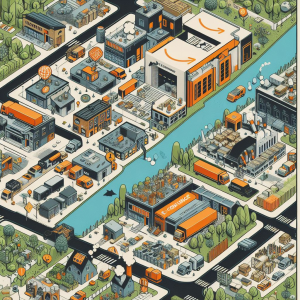Introduction
Meet Jane Doe, a seasoned community activist with over a decade of experience in urban planning and development. Jane has dedicated her career to fostering sustainable and community-friendly urban growth. In this article, she shares her insights on the growing issue of backyard warehouses and offers practical solutions for concerned community members and officials.
Understanding the Backyard Warehouse Phenomenon
Backyard warehouses, often seen as an eyesore and a nuisance, have become increasingly prevalent in our communities. These structures, typically built without proper permits or oversight, can pose significant challenges to the quality of life in our neighborhoods. They can lead to increased traffic, noise, and even potential environmental hazards. But what is driving this trend, and why has it become such a pressing issue?
The Impact of Backyard Warehouses on Communities
The effects of backyard warehouses on local communities are far-reaching. Environmentally, these structures can contribute to increased pollution and degradation of local ecosystems. Socially, they can disrupt community cohesion and lead to conflicts between neighbors. Economically, they can negatively impact property values and local businesses. It’s clear that the proliferation of backyard warehouses is not just a minor inconvenience – it’s a significant community issue that requires our attention.
The Role of Community Activists in Addressing the Issue
Community activists play a crucial role in addressing the issue of backyard warehouses. By raising awareness about the problem, rallying community members, and advocating for policy changes, activists can help drive the change needed to curb the proliferation of these structures. Whether it’s organizing community meetings, launching awareness campaigns, or lobbying local government officials, the work of community activists is essential in this fight.

How Local Government Officials Can Help
Local government officials also have a critical role to play. By implementing and enforcing regulations that limit the development of backyard warehouses, officials can help protect our communities. This could involve revising zoning laws, increasing penalties for violations, or even offering incentives for property owners to remove existing structures. The power of policy should not be underestimated in addressing this issue.
Real Estate Developers: Part of the Problem or Part of the Solution?
While real estate developers may be seen as part of the problem, they can also be part of the solution. By prioritizing sustainable and community-friendly development, developers can help prevent the spread of backyard warehouses. This could involve designing developments that respect the character of existing neighborhoods, engaging with community members to understand their concerns, or even partnering with local governments to create affordable housing alternatives.
Case Study: Successful Community Action Against Backyard Warehouses
Let’s take a look at a real-life example of a community that successfully prevented the development of backyard warehouses. In the small town of Pleasantville, residents, activists, and local officials came together to fight a proposed warehouse development. Through a combination of community organizing, policy advocacy, and legal action, they were able to stop the development and preserve the character of their community. This case serves as a powerful reminder of what can be achieved when communities unite.
How to Unite Your Community Against Backyard Warehouses
So, how can you take action in your own community? Here are some practical tips and strategies:
- Educate Yourself and Others: Learn about the issue and share your knowledge with your neighbors.
- Organize: Form a community group to address the issue.
- Advocate: Contact your local government officials and voice your concerns.
- Partner: Work with local businesses, schools, and other organizations to support your cause.
Conclusion
The issue of backyard warehouses is a complex one, but it’s not insurmountable. By uniting as a community and leveraging the power of activism, policy, and sustainable development, we can protect our neighborhoods and ensure a better future for all. So, let’s unite and say no more to backyard warehouses!
Table: Key Points Summary
| Heading | Key Point |
|---|---|
| Backyard Warehouse Phenomenon | Explanation and concerns |
| Impact on Communities | Environmental, social, economic impacts |
| Role of Community Activists | Raising awareness, rallying communities |
| Role of Local Government Officials | Regulation and control |
| Real Estate Developers | Potential positive contributions |
| Case Study | Example of successful community action |
| Uniting the Community | Practical tips and strategies |



